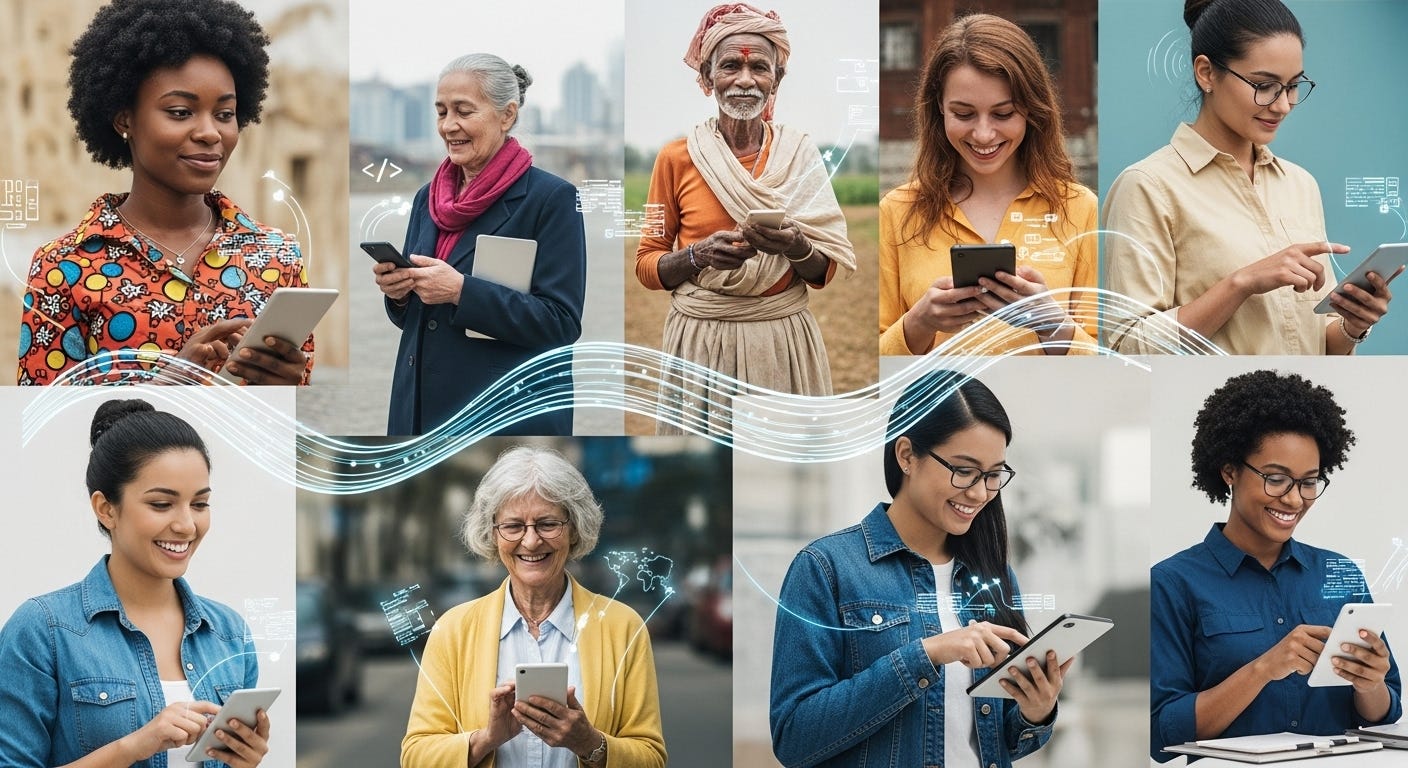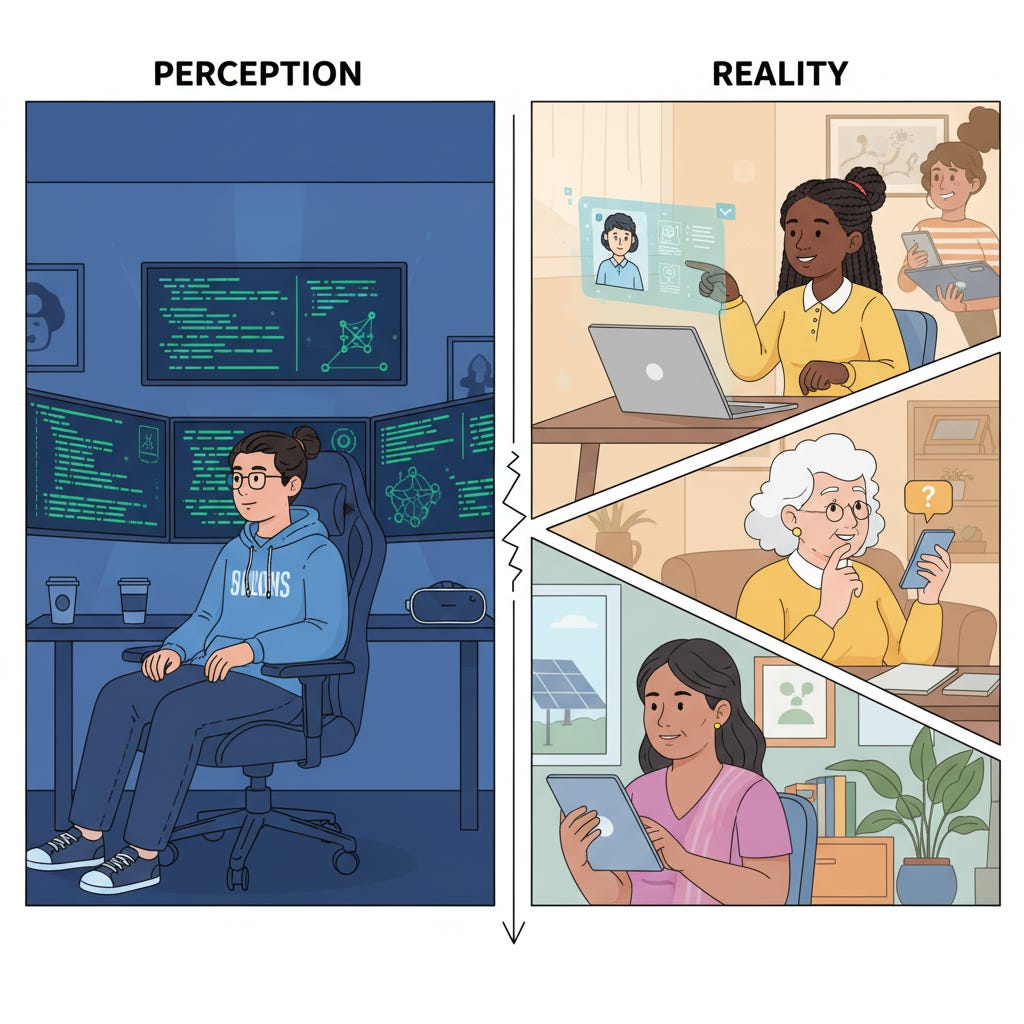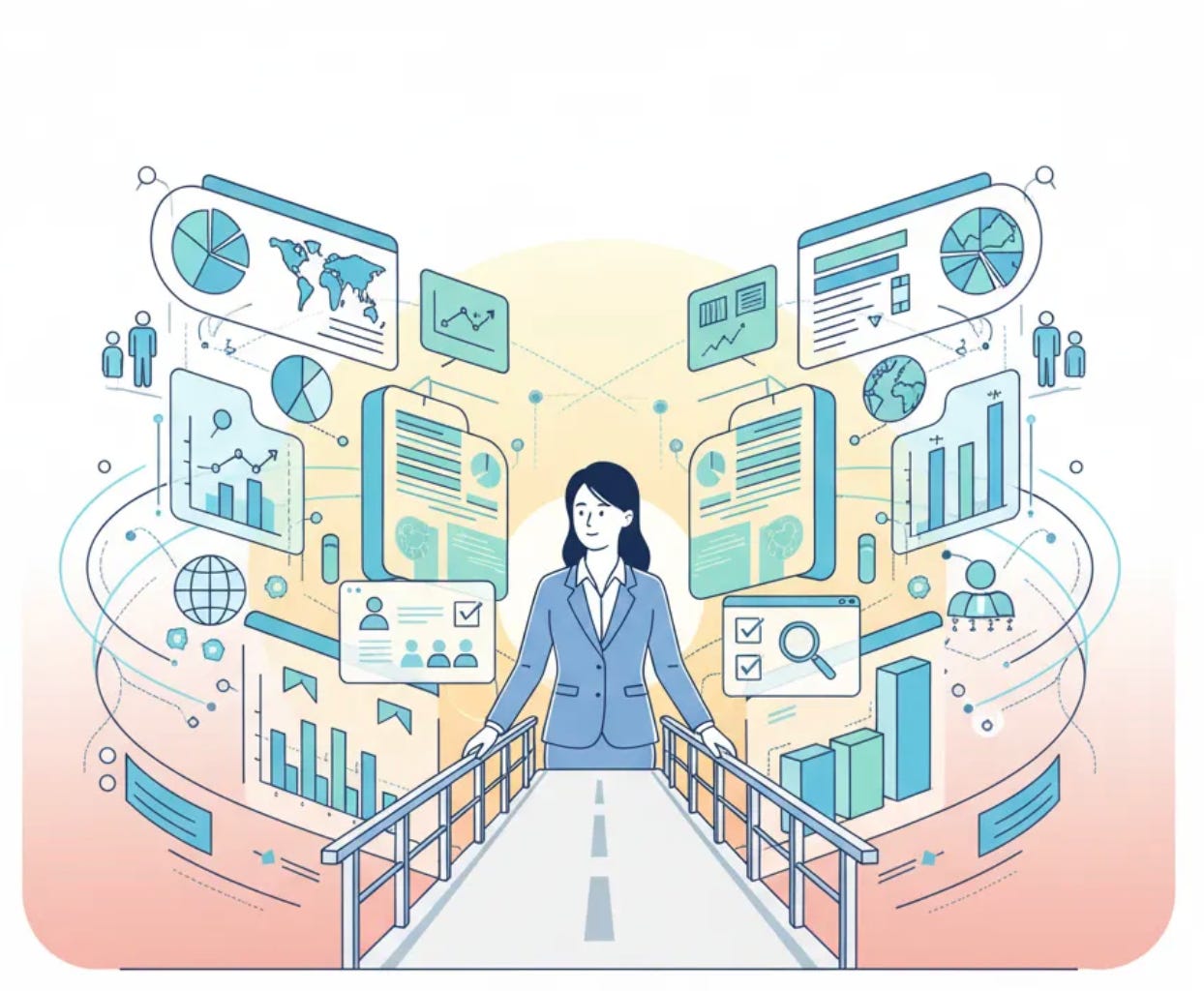700 Million ChatGPT Users Later...
The AI Revolution We're Actually Living Through
ChatGPT has 700 million weekly users sending 18 billion messages per week. That's roughly 10% of the world's adults. But here's what nobody saw coming about how they're actually using it.
Only 4.2% of conversations involve programming, despite coding dominating every AI headline. Meanwhile, 70% of usage has nothing to do with work at all. More people use ChatGPT for tutoring and teaching (10% of all messages) than for writing code. The AI girlfriend panic? Completely overblown. Just 1.9% of conversations touch on relationships or companionship.
The user base flipped from 80% male to majority female in just two and a half years. Usage grew fastest in lower-income countries, not Silicon Valley. And when people do use it for writing, they're mostly editing text they already wrote rather than generating new content from scratch.
This comes from the first major study using internal ChatGPT data, published by researchers at OpenAI, Duke, and Harvard. They analyzed over a million conversations while protecting user privacy through automated classification systems. The patterns that emerged challenge almost everything we assumed about AI adoption.
The Myths We Believed
"AI is mainly for programmers." Programming represents a tiny slice of actual usage. Education and tutoring beat coding by more than two to one. People are using ChatGPT as a personalized teacher far more than as a coding assistant. The technical conversation around AI has been missing what most people actually want: help learning and understanding things.
"It's replacing human relationships." Less than 2% of conversations involve companionship, relationships, or personal reflection. The emotional AI dependency we worried about simply isn't materializing at scale. People seem to know the difference between getting information from AI and connecting with humans.
"It's all about work productivity." Personal use dominates and is growing faster than work use. Between June 2024 and June 2025, non-work messages grew from 53% to over 70% of total usage. Even existing users are shifting toward personal applications over time. The productivity narrative misses the bigger story of AI as a general-purpose thinking tool.
"It's creating a creativity crisis." When people do use ChatGPT for writing, two-thirds are editing existing text rather than generating new content. They're not replacing their creativity; they're refining it. The tool functions more like an advanced grammar checker and editor than a creative replacement.
"It's for all age groups equally." Nearly half of all adult usage (46%) comes from people under 26. Younger users aren't just early adopters; they're the dominant user base. This suggests AI literacy might become as generational as social media adoption was.
The Patterns Nobody Expected
The occupation convergence might be the most surprising finding. Whether you're a manager, engineer, teacher, or salesperson, your ChatGPT usage looks remarkably similar. The study mapped conversations to standard work activities and found the same seven tasks appearing in nearly identical rank order across completely different professions. Everyone's gathering information, making decisions, documenting findings, and thinking creatively. AI is revealing something fundamental about knowledge work: beneath the surface differences, we're all doing similar cognitive tasks.
The geographic story flips typical technology adoption. Instead of starting in wealthy tech hubs and trickling down, ChatGPT usage grew fastest in lower and middle-income countries over the past year. This suggests AI might be democratizing access to capabilities that were previously concentrated in expensive markets or elite institutions.
There's also a quality paradox buried in the data. Messages where people ask questions or seek advice get much higher satisfaction ratings than messages where they request specific tasks. People are happier when ChatGPT helps them think through problems than when it tries to solve problems for them. This hints at something important about the human-AI relationship: we value the thinking process as much as the output.
The work applications reveal another counterintuitive pattern. Rather than automating tasks directly, people primarily use ChatGPT for what the researchers call "decision support." About 49% of usage involves asking questions to make better decisions, while 40% involves requesting specific outputs. People want better judgment, not just task completion.
What This Actually Means
These patterns suggest we're in the middle of a different revolution than we expected. Instead of AI replacing human capabilities, it's augmenting human decision-making at massive scale. The users aren't trying to eliminate human work; they're trying to do human work better.
For business leaders, this implies thinking about AI adoption differently. The value might not be in automating processes but in helping people make better decisions faster. The companies figuring this out first, rather than chasing automation dreams, might have the real advantage.
The global and demographic shifts also matter. If your organization is still thinking about AI as a technical tool for technical people, you're missing the broader adoption wave. The future users are already here, they're younger, more diverse, and they're using AI for everything except the things we thought they'd use it for.
We're not heading toward a world where AI replaces human thinking. We're heading toward a world where human thinking gets dramatically better. The companies and individuals who understand this shift are the ones worth watching.




